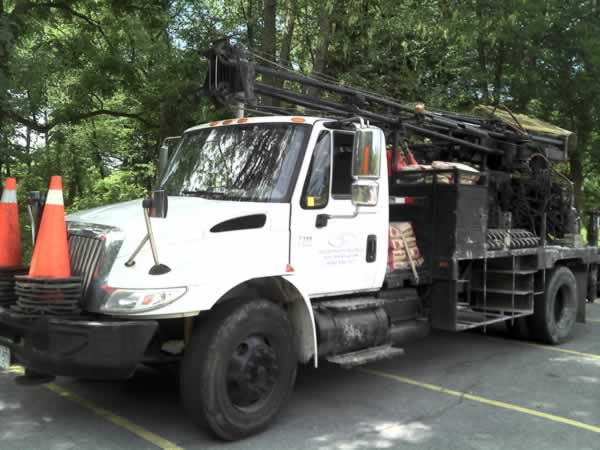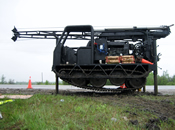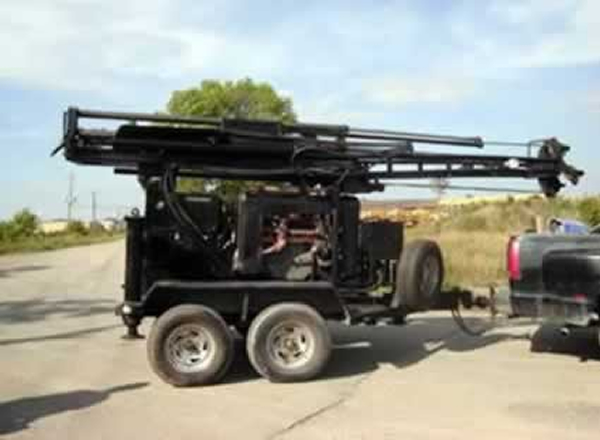Drilling Services
We will work with you to determine the most efficient, cost effective and most importantly safest drilling method, utilizing our equipment, with the capability of reaching even the most inaccessible locations with our limited access drill rig.
We offer you the following services:
Geotechnical Drilling
In preparation for construction, information must first be gathered about the underlying soil conditions to determine proper engineering for weight loads and stability. Types of soil, groundwater information and depth to bedrock are just a few aspects of ground chemistry.
GEOTILL is able to perform in-situ sampling as well as install piezometers that will measure ground movement and settling patterns. We are also able to perform SPT (Standard Penetration Test), split spoon sampling and collect undisturbed samples.
Environmental Drilling
Today, more than ever, we recognize the importance of maintaining and appreciating our environment, not only for us, but for future generations to come. Since our beginning, GEOTILL has been providing environmental drilling services for our clients throughout the Midwest (Indiana, Ohio, Michigan, Kentucky, Missouri, and Illinois) . Our environmental drilling practices provide clean, accurate samples to determine the existence of any contaminates in soil or groundwater. To meet the needs of our individual client’s projects, GEOTILL Geotechnical & Environmental drilling offers a variety of solid/hollow stem auger, air-mud-water rotary, coring as well as direct push sampling with our 8040 and 7822 Geoprobe .
Rotary Drilling
The rotary drilling technique is normally used for forming a deep observation borehole or for obtaining representative samples of rock. Powered rotary cutting tools use a cutter head on the end of a shaft, which is driven into the ground as it rotates. The system requires lubrication (air, water or drilling mud) to keep the cutting head cool and remove the soil or rock which has been cut. The lubricant lifts the debris from the cutting head up the borehole and ejects the material at ground level.
Coring
This a method of collecting actual cores of the bed rock for engineering and geological studies. The core barrel is lowered into the hole and core rods of the same size are attached to reach the starting point in the bed rock. The drill rod acts as a casing for the borehole and provides a controlled environment to efficiently retrieve the rock core from the borehole.
During the entire process, water is being pumped into the drill rods to cool the diamond bit and remove the cuttings from the borehole.
This is an efficient method of recovering core samples of rock. Typical uses include foundation investigations, material sources, rock cut investigation and general rock coring when an actual core of the rock is desired.
Solid-stem Augers
Solid-stem auger drilling incorporates continuous-flight augers. Augers for monitoring well installations must be of sufficient diameter (approx. 3-5 in. larger in diameter than the monitoring wells) to allow effective placement of well filter and sealing materials. Solid-stem augering has a number of advantages. It produces a moderate amount of easily contained cuttings and no fluid is required in the drilling process. Smaller rigs than those used in hollow-stem auger drilling may be used, simplifying decontamination, site maneuvering and lowering costs. These rigs drill relatively rapidly, especially in shallow applications.
Hollow-Stem Auger
The center of the auger is hollow during drilling or formation cutting. The center holds a rod connected to a plug at the bottom bit. Once the desired drilling depth is reached, the center plug and rods can be pulled out, leaving the hollow augers in place. The hollow augers hold the borehole open for sediment sampling and well installation.
Barge Drilling
This drill is crane lift equipped, helicopter equipped, and barge ready. Capable of HQ3 Angle Coring up to a maximum of 37 degrees. 14’ 11” L,5’5”W, 16’4” Mast height, 6,800lbs. Low clearance, limited access drill rig mounted on skids. It has 5,000 foot pounds of torque, and 140# Auto Hammer. This rig is capable of accessing rugged and limited access site locations. The skid carrier is equipped with a front winch capable of assisting the rig into difficult sites. .
Direct Image Electrical Conductivity (EC) Probe information gathered with our conductivity system can be used to aid the understanding of the movement and location of contaminants in the subsurface. Varying levels of conductivity are recorded, identifying finer or heavier grained sediments, allowing an overall picture of the changes in density and therefore the potential for movement of contaminants across the site. The information gathered is also able to assist with the proper placement of monitoring or extraction wells.
Water Monitoring Well Installations and Well Decommissioning ? the handling of water monitoring wells is key to avoiding an Environmental incident. Used to provide access for scientific and engineering investigation, correct installation and decommissioning practices must be followed to avoid contamination or pollution of the groundwater.
Insitu Services
- SPT Energy Calibration
- Cone Penetration Testing CPT
- Pressuremeter Testing
- Vane Shear Testing
- Dilatometer Testing
- Goodman Jack Testing
- Instrument Installation
Our project management team will welcome the opportunity to work with you, providing the most efficient equipment for the completion of your projects.
Provide geotechnical and environmental drilling in Indiana, Illinois, Michigan, Ohio, Kentucky and Missouri




